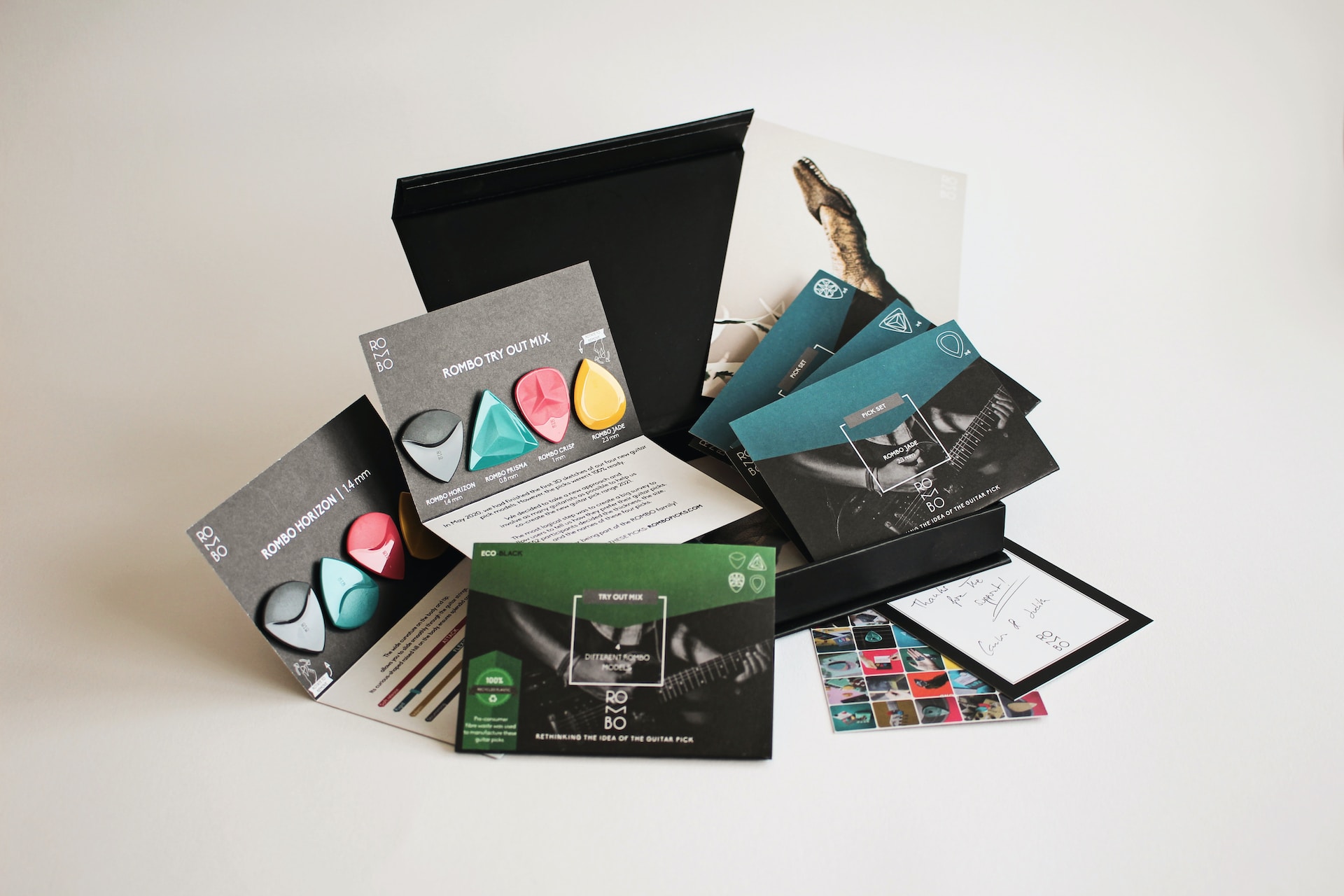
03 Nov How to Make a Big Impact with Small Format Printing

Small format printing may seem unassuming, but can be a powerful way to attract more customers to your business. Whether you’re designing business cards, flyers, or brochures, the key to success lies in understanding how to get the most out of a small canvas.
While there isn’t a strict size limit that defines small-format printing, it typically includes print materials that are 11” X 17” or smaller. Examples of small format prints include:
- Flyers
- Business cards
- Stickers
- Labels
- Brochures and pamphlets
- Conference collateral
- Magnets
- Calendars
Small-format printing can be highly impactful, but it requires careful planning. Here’s how you can use small format prints to make a big impact.
Eight Design Tips for Effective Small Format Printing
1: Understand Your Audience
Tailoring your designs and messages to the needs and interests of your audience is essential. For example, a sophisticated, minimalistic style might resonate with a corporate audience, while a vibrant, playful design would appeal to a younger demographic.
2: Don’t Overcomplicate Things
If you want to make your design both captivating and memorable, keep it simple. Choose colors that represent your brand or message, but limit your palette in order to avoid chaos in your design. Use fonts that are simple, easy to read, and relevant to your content—you may love the look of Comic Sans, but it isn’t a very elegant choice for corporate materials.
3: Organize and Edit
Cluttered designs are confusing and overwhelming, especially on a small canvas. White space is your friend, so use it wisely to organize your information and graphics. Make sure that your branding elements (such as logos and color schemes) are consistent across all materials. Consistency reinforces your brand identity and helps your audience recognize your name more easily.
4: Include a Call to Action
Small format marketing materials should always contain clear and compelling calls to action. Whether you want your audience to visit your website, join your mailing list, download an app, or make a purchase, give them explicit instructions on how to do so.
5: Add a QR Code
Incorporating a QR code into small format materials like business cards or flyers can enhance their overall impact. QR codes can be any size, and they bridge the gap between print and digital marketing. With QR codes, you can send people directly to a particular page on your website or social media profiles, share contact information or videos, and more.
6: Get Creative with Size and Shape
Small prints can be produced in an endless variety of shapes, so don’t be afraid to get creative. For instance, your business cards can be die-cut in the shape of your logo for a more unique and memorable design. And you can print flyers and other marketing materials as squares, circles, ovals, etc. to stand out from all the rectangular prints distributed at events.
7: Choose the Right Paper
The paper or cardstock you choose can significantly influence the way people perceive your brand. Thick, high-quality, paper not only conveys professionalism, it also gives your small format prints more durability and longevity.
8: Format Your Files for Print
Before sending a design to print, make sure that your files are formatted correctly. You’ll need to check that the resolution, color mode, and bleed are set to print-ready specifications. If you work with your local print shop to guarantee that your files meet their specifications, you’ll be able to avoid printing issues.
Small Format Printing in Tempe, Arizona
From small format print jobs to larger-than-life graphics, Mousegraphics offers all the print services you need to promote your business. We can print your creative designs in an extensive range of shapes and sizes. We can also help you select the perfect materials and finishes to ensure that your designs make a big impact. Call us at 480-470-7438 today to request a quote.
Images used under creative commons license – commercial use (11/3/2023). Cover Photo by Rombo on Unsplash



